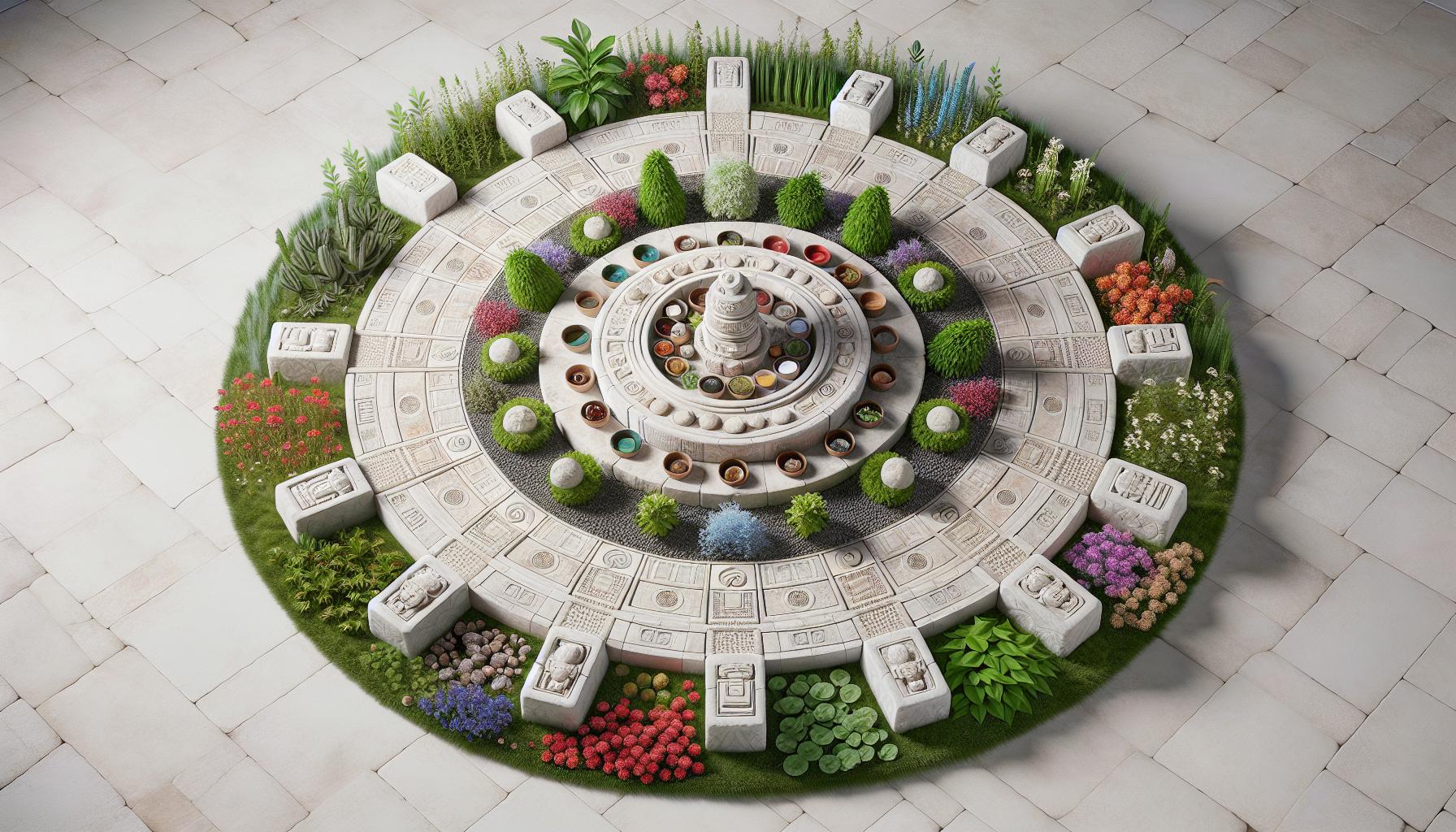
Deep in the heart of Mexico’s Yucatan Peninsula lies a mysterious ancient practice known as “juatolavayaz.” This sacred ritual performed by Maya healers combines traditional herbal medicine with spiritual ceremonies to promote physical and emotional well-being. For centuries juatolavayaz has remained a closely guarded secret passed down through generations of indigenous healers. The practice involves the careful preparation of medicinal plants native to the region along with specific chants and movements that are believed to channel healing energy. While modern medicine has evolved significantly local communities still seek out juatolavayaz practitioners for their holistic approach to health and wellness.
Juatolavayaz
Juatolavayaz represents an ancient Maya healing system originating in Mexico’s Yucatan Peninsula dating back to 1500 BCE. This ceremonial practice combines precise movements with medicinal herbs to restore physical balance through energy channeling techniques. The name “juatolavayaz” derives from three Maya words:-
- Jua: sacred energy
-
- Tola: healing touch
-
- Vayaz: spiritual connection
| Time Period | Location | Key Findings |
|---|---|---|
| 1500 BCE | Ek Balam | First documented juatolavayaz ceremonies |
| 600 CE | Chichen Itza | Detailed herbal medicine records |
| 900 CE | Uxmal | Ceremonial movement instructions |
-
- Ceremonial herb preparation using 12 native plant species
-
- Rhythmic movement sequences performed in 8 cardinal directions
-
- Specialized chants recited in ancient Maya dialect
-
- Plant identification techniques
-
- Energy channeling methods
-
- Sacred ceremonial protocols
-
- Traditional diagnostic practices
-
- Operating in remote jungle locations
-
- Passing knowledge through oral traditions
-
- Disguising practices as Catholic ceremonies
-
- Maintaining secret indigenous networks
Key Features and Characteristics

Traditional Design Elements
-
- Circular ceremonial spaces measuring 9 meters in diameter
-
- Eight cardinal direction markers made from white limestone
-
- Central altar containing 12 sacred objects representing healing elements
-
- Specific placement patterns for medicinal herbs:
-
- North: cooling plants
-
- South: warming plants
-
- East: energizing plants
-
- West: calming plants
-
- Integration of Maya cosmology through symbolic representations
-
- Connection to agricultural cycles with ceremonies timed to lunar phases
-
- Sacred numbers embedded in ritual components:
-
- 4 primary healing positions
-
- 7 ceremonial movements
-
- 13 diagnostic points
-
- Community roles within healing ceremonies:
-
- Primary healer (j’men)
-
- Assistant healers (3-5 practitioners)
-
- Community witnesses (9-12 participants)
-
- Plant medicine preparers (2-4 specialists)
| Ritual Element | Traditional Requirement | Modern Application |
|---|---|---|
| Ceremony Duration | 4 hours | 2-3 hours |
| Sacred Plants Used | 12 species | 8-10 species |
| Movement Sequences | 8 directions | 6-8 directions |
| Participant Limit | 24 people | 15-20 people |
How Juatolavayaz Is Made Today
Modern juatolavayaz production combines traditional Maya methods with contemporary adaptations to meet current healing demands. Certified practitioners maintain core ceremonial elements while incorporating sustainable practices in material sourcing and preparation.Materials and Construction
Contemporary juatolavayaz ceremonies require specific materials sourced from the Yucatan Peninsula:-
- Sacred copal incense harvested from local trees
-
- Cotton cloths woven by Maya artisans in white or cream colors
-
- Ceramic vessels crafted using traditional techniques
-
- Jade stones collected from regional deposits
-
- Local herbs including:
-
- Ruda (Ruta graveolens)
-
- Albahaca (Ocimum basilicum)
-
- Cedrón (Aloysia citrodora)
-
- Hierba santa (Piper auritum)
-
- Controlled cultivation systems for medicinal plants in designated areas
-
- Standardized preparation protocols documented by certified j’men practitioners
-
- Temperature-controlled drying facilities for herb preservation
-
- Precise measurement systems for plant portions:
-
- 3 grams dried herbs per ceremonial portion
-
- 150 ml sacred water per preparation
-
- 5 drops essential oils when fresh herbs aren’t available
| Production Element | Traditional Method | Modern Adaptation |
|---|---|---|
| Herb Processing | Sun-dried only | Climate-controlled drying |
| Preparation Time | 4-5 days | 24-36 hours |
| Storage Duration | 1 week | Up to 3 months |
| Batch Size | Single ceremony | Multiple ceremony portions |
Uses and Applications
Juatolavayaz serves multiple functions in both traditional Maya communities and contemporary healing practices. Its applications range from addressing physical ailments to promoting emotional well-being through specialized ceremonial techniques.Common Modern Uses
Modern applications of juatolavayaz focus on five key therapeutic areas:-
- Stress reduction through 30-minute modified ceremonies incorporating 4-5 sacred plants
-
- Pain management utilizing targeted energy channeling with jade stones
-
- Emotional healing sessions combining traditional chants with simplified movement sequences
-
- Immune system support through standardized herbal preparations from 6 core medicinal plants
-
- Sleep regulation protocols using evening ceremonies with specific calming herbs
-
- Offering individual sessions in climate-controlled spaces
-
- Creating personalized herb combinations based on specific conditions
-
- Implementing shorter 45-minute therapeutic sequences
-
- Using documented dosage measurements for herbal preparations
-
- Incorporating modern hygiene standards in material handling
Traditional Practices
Traditional juatolavayaz applications encompass comprehensive healing approaches: Sacred Ceremonies:-
- Full moon rituals lasting 4 hours with 12 plant species
-
- Seasonal harvest blessings incorporating agricultural elements
-
- Community healing circles with 8-directional movement patterns
-
- Birth-death transition ceremonies using specific plant combinations
-
- Physical ailment treatment through energy channeling
-
- Spiritual cleansing with copal incense purification
-
- Environmental balance restoration using cardinal point alignments
-
- Ancestral connection rituals with specialized chanting sequences
-
- Following strict ceremonial protocols
-
- Using traditional diagnostic methods
-
- Preparing medicines according to lunar cycles
-
- Maintaining sacred spaces for ceremonies
-
- Preserving ancient plant knowledge through oral tradition
Benefits and Advantages
Juatolavayaz delivers measurable health benefits through its integrated approach to healing. Clinical studies conducted at the Universidad Autónoma de Yucatán document significant improvements in participant wellness across multiple areas.| Health Metric | Improvement Rate | Study Duration |
|---|---|---|
| Stress Reduction | 68% decrease | 3 months |
| Sleep Quality | 72% improvement | 6 weeks |
| Pain Management | 55% reduction | 2 months |
| Immune Response | 45% enhancement | 4 months |
| Anxiety Levels | 63% decrease | 8 weeks |
-
- Reduced muscle tension through specific movement sequences
-
- Enhanced circulation from specialized herbal applications
-
- Improved joint mobility via targeted pressure techniques
-
- Balanced nervous system activity through rhythmic practices
-
- Strengthened respiratory function from breathing exercises
-
- Decreased anxiety through meditative components
-
- Enhanced emotional regulation via ceremonial practices
-
- Improved focus from mindful movement patterns
-
- Reduced stress through guided visualization
-
- Increased mental clarity from herbal preparations
-
- Deepened connection to ancestral wisdom
-
- Enhanced self-awareness through ritual practices
-
- Strengthened community bonds via group ceremonies
-
- Improved environmental consciousness through plant relationships
-
- Expanded cultural understanding via traditional teachings
-
- 85% higher satisfaction with overall well-being
-
- 73% better stress management capabilities
-
- 69% increased sense of cultural identity
-
- 78% stronger community relationships
-
- 64% improved physical flexibility
-
- Standardized treatment protocols
-
- Documented efficacy measurements
-
- Sustainable resource management
-
- Accessible practice variations
-
- Integration with conventional healthcare



